| Photography / Travel |
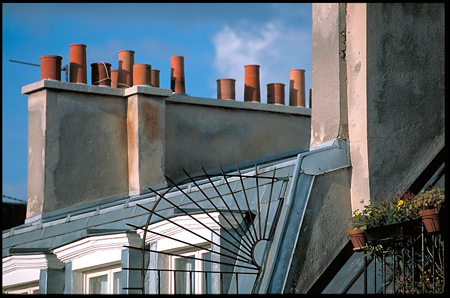 I discovered that the cover of The Alan Parson's Project's excellent album, I Robot, was
taken in Terminal 1 of Charles De Gaulle Airport as I got off the plane.
I discovered that the cover of The Alan Parson's Project's excellent album, I Robot, was
taken in Terminal 1 of Charles De Gaulle Airport as I got off the plane.
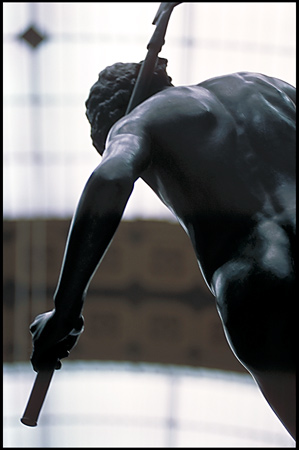 She spoke English and French perfectly and was from Sweden. I think I impressed her
by speaking a few words of Swedish which I learned by listening to a bon chanteuse, Lisa
Ekdahl. The only words I really knew were 'vem vet' which means 'who knows?'. It's a
surprisingly useful phrase- I mean, if you're in a restaurant and the waiter says something
you don't understand, what other reply can accommodate all possible scenarios from the
quite likely, "what'll you have?" to the admittedly rarer, "are all events in life the chaotic
asynchronous collisions of particle groups in a non-axiomatic field or are we merely
witnessing the nodal aberrations of a harmonious system of non-linear equations?". Of
course.. I would have replied 'vem vet' to that last one if I was asked in English.
She spoke English and French perfectly and was from Sweden. I think I impressed her
by speaking a few words of Swedish which I learned by listening to a bon chanteuse, Lisa
Ekdahl. The only words I really knew were 'vem vet' which means 'who knows?'. It's a
surprisingly useful phrase- I mean, if you're in a restaurant and the waiter says something
you don't understand, what other reply can accommodate all possible scenarios from the
quite likely, "what'll you have?" to the admittedly rarer, "are all events in life the chaotic
asynchronous collisions of particle groups in a non-axiomatic field or are we merely
witnessing the nodal aberrations of a harmonious system of non-linear equations?". Of
course.. I would have replied 'vem vet' to that last one if I was asked in English.
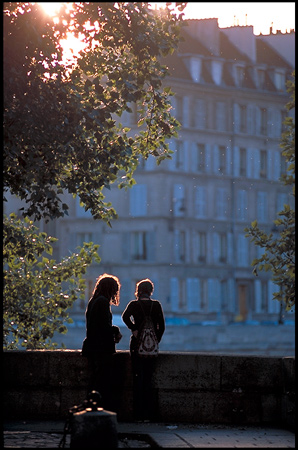 As it started to get darker, we
went uptown so I could buy some film from a store I'd found on the internet. I bought
my film there partly so I wouldn't have to take it through the airport x-ray machines more
than once and partly because Fuji film is cheaper in Paris (or at least as cheap) as it is in
the United States.
I'm glad she was there or I probably wouldn't have gotten any film. I asked the girl at
the desk for 30 rolls of Fuji Velvia and 30 rolls of Provia. She went into the backroom
and then left the store and came back a few minutes later with 25 rolls of Provia. I asked
about the Velvia. "Zero Velvia" she said quite clearly. I said that was impossible ("c'est
imposs-eeb-la!"). She sat in her chair and looked up at me with a look that said, "here I
am, reading my newspaper with my feet up and you have the _nerve_ to come in here and
try to buy film from me. What kind of a photo store do you think this is?!"
As it started to get darker, we
went uptown so I could buy some film from a store I'd found on the internet. I bought
my film there partly so I wouldn't have to take it through the airport x-ray machines more
than once and partly because Fuji film is cheaper in Paris (or at least as cheap) as it is in
the United States.
I'm glad she was there or I probably wouldn't have gotten any film. I asked the girl at
the desk for 30 rolls of Fuji Velvia and 30 rolls of Provia. She went into the backroom
and then left the store and came back a few minutes later with 25 rolls of Provia. I asked
about the Velvia. "Zero Velvia" she said quite clearly. I said that was impossible ("c'est
imposs-eeb-la!"). She sat in her chair and looked up at me with a look that said, "here I
am, reading my newspaper with my feet up and you have the _nerve_ to come in here and
try to buy film from me. What kind of a photo store do you think this is?!"
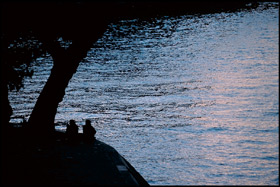
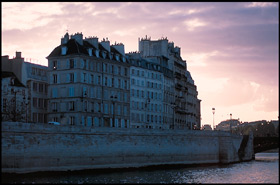
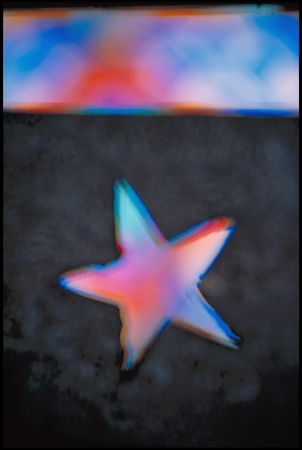 The next day I found a youth hostel (auberge de jeunesse) on Jules Ferry Road (Metro
Republique) to buy a new hostel membership card since I had left mine at home. It
looked really nice and I may try to stay there in the future. You can't make reservations,
you just have to get there at 9 AM. I used their internet connection and checked my
email and found that the website I've been working on for the last year had broken the
day I left (but apparently because of a power outage so hopefully they'll get
it going again and I won't be fired). I bought a phone card there (these are all good
reasons to stay in a hostel. This one, anyway, had everything you'd need and the guy at
the desk spoke English).
The next day I found a youth hostel (auberge de jeunesse) on Jules Ferry Road (Metro
Republique) to buy a new hostel membership card since I had left mine at home. It
looked really nice and I may try to stay there in the future. You can't make reservations,
you just have to get there at 9 AM. I used their internet connection and checked my
email and found that the website I've been working on for the last year had broken the
day I left (but apparently because of a power outage so hopefully they'll get
it going again and I won't be fired). I bought a phone card there (these are all good
reasons to stay in a hostel. This one, anyway, had everything you'd need and the guy at
the desk spoke English).
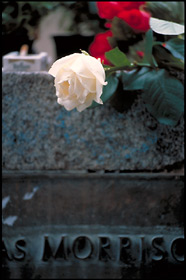 I got an 11PM-7AM train ticket to the Spanish border and went to the east side of town to
see Jim Morrison's grave at Le Pere LaChaise. I heard that his 30 year lease had to be
renewed soon and he would probably be moved back to the US. When I was there, there
was a guard standing by it. They seemed to have cleaned up the graffiti it was known for
too. Schubert's grave is there too, but I didn't go see it. Why would I? I mean, can you
imagine him singing for The Doors?
I got an 11PM-7AM train ticket to the Spanish border and went to the east side of town to
see Jim Morrison's grave at Le Pere LaChaise. I heard that his 30 year lease had to be
renewed soon and he would probably be moved back to the US. When I was there, there
was a guard standing by it. They seemed to have cleaned up the graffiti it was known for
too. Schubert's grave is there too, but I didn't go see it. Why would I? I mean, can you
imagine him singing for The Doors?
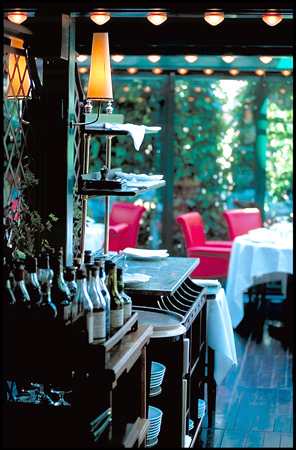 The best part about Paris is that the French use the word 'voila' to celebrate everyday
victories. In the US, it's a word that for some reason has been relegated to only magicians and TV
chefs.
The best part about Paris is that the French use the word 'voila' to celebrate everyday
victories. In the US, it's a word that for some reason has been relegated to only magicians and TV
chefs.
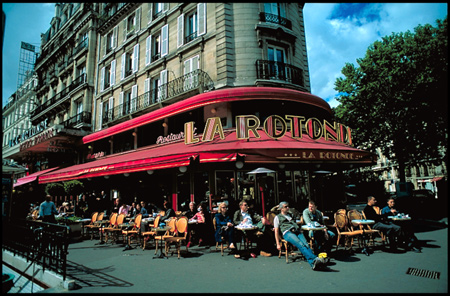 I went south to the Boulevard du Montparnasse and saw three of Hemingway's favorite
cafés. La Select is the café Jake calls "that new dive" in The Sun Also Rises. La
Rotunde next door also appears in TSAR and La Closerie des Lilas a few blocks away
was where he wrote most of that book. La Closerie is a beautiful café. In A Moveable
Feast Hemingway calls it "one of the best cafés in Paris". In that autobiography, he
spends a good deal of time trying to chase other people out of it who tried to talk to him
while he was writing.
I went south to the Boulevard du Montparnasse and saw three of Hemingway's favorite
cafés. La Select is the café Jake calls "that new dive" in The Sun Also Rises. La
Rotunde next door also appears in TSAR and La Closerie des Lilas a few blocks away
was where he wrote most of that book. La Closerie is a beautiful café. In A Moveable
Feast Hemingway calls it "one of the best cafés in Paris". In that autobiography, he
spends a good deal of time trying to chase other people out of it who tried to talk to him
while he was writing.
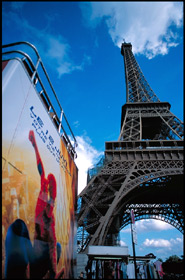
| A few years later, I found out I was sort of right. The Eiffel Tower was built as a temporary structure for an exhibition in 1889. Parisians wanted it torn down, but it was saved in 1907 when the government realized how effective it was as a radio antenna. |
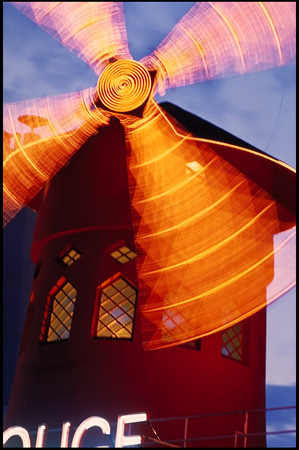
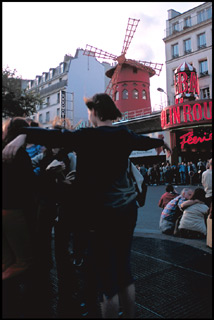
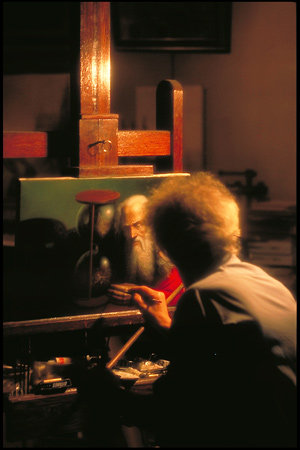
 Day 3-4: Madrid, Toledo, and Consuegra, Spain
Day 3-4: Madrid, Toledo, and Consuegra, Spain
Hello, there. I was looking for inspiring photographs of Paris, through a search engine, and found a link to your web-site. I am glad I did. Your pictures are so amazing. I especially like the narrative effect in the Europe trip section. You're a great photographer and writer. I will be studying abroad all of next year and your pictures made me more eager, which I didn't think possible. So what are the chances that you have some sort of affiliation with my university? Well, probably very slim, but alas it is possible, considering I attend UMD. I was pleasantly surprised to know that the person whom has taken such wonderful photos dwells in my area. Rock it, my man, rock it.
-- Eli, Nov 24, 2003